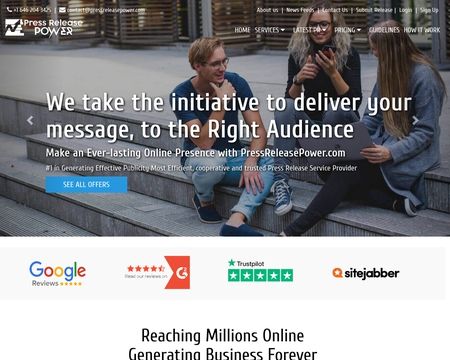In today's digital age, starting an online store can be an excellent way to turn your entrepreneurial dreams into reality. Whether you're looking to sell handmade crafts, vintage treasures, or innovative products, the internet provides a vast marketplace waiting to be explored. But what if you're on a tight budget and think you need a substantial amount of capital to get started? The good news is that it's possible to launch your online store with little to no money. In this comprehensive guide, we'll walk you through the steps of creating a successful online store on a shoestring budget.
Why Start an Online Store?
Before diving into the details of how to start an online store with no money, let's explore why launching an e-commerce business is a compelling idea:
1. Low Overhead Costs: Running an online store typically requires lower overhead costs than a brick-and-mortar business. You won't need to rent a physical space or invest in utilities and furnishings.
2. Wide Audience Reach: The internet allows you to reach a global audience, expanding your potential customer base.
3. Flexibility: Running an online store offers flexibility in terms of working hours and location. You can manage your business from anywhere with an internet connection.
4. E-commerce Growth: E-commerce has been on the rise for years, and recent global events have accelerated the shift to online shopping, creating ample opportunities for online entrepreneurs.
Steps to Start an Online Store with No Money
Now, let's explore the step-by-step process of launching your online store without a significant initial investment:
Choose Your Niche and Products
Research: Start by identifying a niche or product category you're passionate about and believe has market potential. Conduct thorough research to understand your target audience and competitors.
Dropshipping: Consider dropshipping as a cost-effective way to start. With dropshipping, you won't need to invest in inventory upfront. Instead, you purchase products from suppliers as customers place orders.
Digital Products: If you're on an extremely tight budget, consider selling digital products like e-books, printables, or online courses. Creating digital products requires minimal upfront costs.
Build Your Online Store
Website Platforms: Choose an e-commerce platform that suits your needs. Popular options like Shopify, WooCommerce (for WordPress), and BigCommerce offer free plans or trials to get you started.
Free Themes: Select a free or low-cost website theme or template. Customize it to match your brand identity. Many platforms offer free themes that can be tailored to your preferences.
DIY Website: Build your website yourself using user-friendly website builders provided by e-commerce platforms. These tools require no coding skills.
Register Your Domain
Domain Name: Choose a memorable and relevant domain name for your online store. Some e-commerce platforms offer free subdomains, but investing in a unique domain is a wise long-term move.
Domain Registrars: Use domain registrars like Namecheap or Google Domains, which often offer affordable domain registration services.
Create Compelling Product Listings
Product Descriptions: Write detailed and persuasive product descriptions that highlight the benefits and features of your products. Effective descriptions can lead to higher sales.
High-Quality Images: Invest time in capturing or sourcing high-quality product images. Clear, appealing visuals can significantly impact a customer's decision to purchase.
Set Up Payment and Shipping Methods
Payment Gateways: Choose payment gateways that integrate with your e-commerce platform. Many platforms offer free integration with popular gateways like PayPal or Stripe.
Shipping Options: Offer various shipping options to cater to different customer preferences. Consider flat-rate or calculated shipping methods.
Implement Marketing Strategies
Social Media: Leverage social media platforms to market your products for free. Create engaging content and interact with your audience regularly.
Email Marketing: Start building an email list from day one. Email marketing is a cost-effective way to connect with potential customers.
Content Marketing: Write blog posts or create informative content related to your niche. This can help drive organic traffic to your website.
Optimize for SEO
Keyword Research: Perform keyword research to identify relevant search terms in your niche. Optimize your product listings and content accordingly.
On-Page SEO: Implement on-page SEO techniques like optimizing meta tags, using descriptive URLs, and creating a sitemap.
Utilize Free Marketing Channels
Google My Business: If you operate locally, set up a Google My Business listing for local visibility.
Online Marketplaces: List your products on free online marketplaces like Etsy, eBay, or Facebook Marketplace to reach a broader audience.
Network and Collaborate
Online Communities: Join online communities and forums related to your niche. Engage in discussions and subtly promote your products when relevant.
Collaborations: Partner with other small businesses or influencers for mutual promotion.
Monitor and Adapt
Analytics: Use free analytics tools provided by your e-commerce platform to monitor your website's performance. Analyze customer behavior to make informed decisions.
Feedback: Encourage customer feedback and reviews to build trust and improve your products or services.
Starting an online store with no money is a realistic and achievable goal. With careful planning, resourcefulness, and dedication, you can turn your e-commerce dream into a successful business venture. Remember that while it's possible to start with minimal investment, it's essential to reinvest profits as your business grows. As your online store gains momentum, you can explore additional strategies and tools to further enhance your brand and expand your reach. Don't let a limited budget deter you from pursuing your entrepreneurial aspirations—start your online store today and embark on a journey of innovation, creativity, and financial independence.

.jpg)
.jpg)






 English (US) ·
English (US) ·